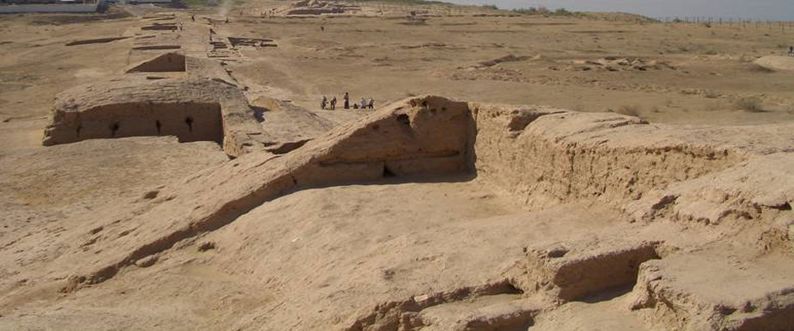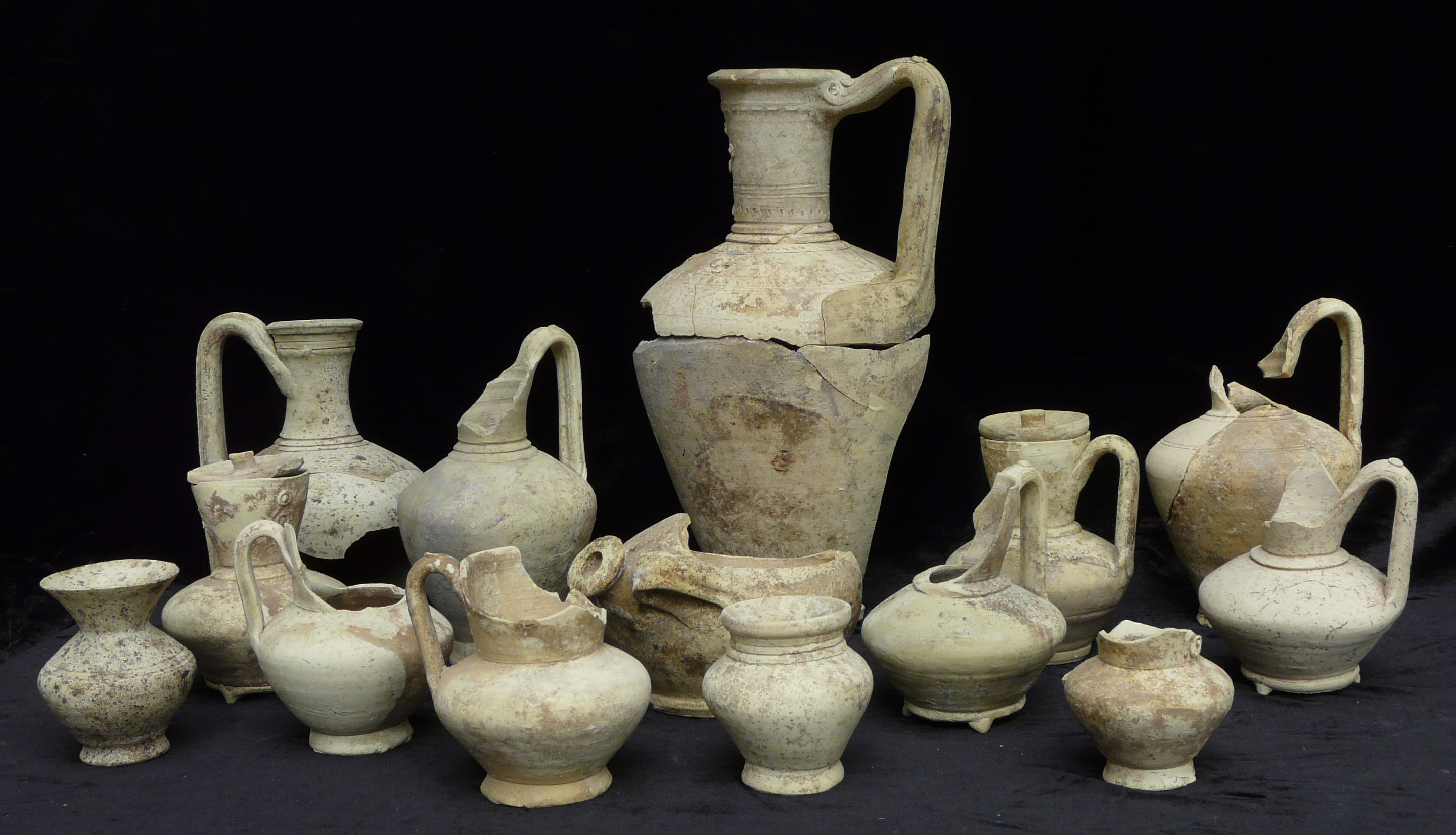Integrated deposit in the Silk Road
Its strategic location makes Termez a prominent political and economic centre
Study of the city from an archaeological
Holistic study of ceramics that is produced and used as an indicator of the passing of the city
 The fortification of Tchingiz Tepe in Termez
The fortification of Tchingiz Tepe in Termez
The project takes place in the ancient city of Termez (Uzbekistan), located on the banks of the Amu Darya (formerly the Oxus river), at the mouth of its tributary, the Surkhan Darya. The strategic location of its location makes Termez a political, military and economic centre of the first order, at the crossroads of the intercontinental commercial networks integrated in the Silk Road that link both Samarkand and the Eurasian steppes with Kabul and the Indian subcontinent, as well as the Mediterranean and the Middle East with Kashgar and China.
The fundamental objective of our project is the study of the ceramic products that circulate and are used in the city throughout its long history, as an indicative factor of its uses and customs, external influences, importation of technologies and own capacities to generate a production characteristic (original) surplus as well as, of sufficient force to introduce these products in the regional markets of Central Asia and beyond these, along the time of its existence.
The holistic study of ceramics contemplated in our project unfailingly involves deepening the study itself of the city from an archaeological perspective, its physical framework, the palaeo-landscapes -flora and fauna- that would give life to the city, its urban evolution, and the knowledge of the ceramic workshops, their technology and the characterisation of the products they would produce, in order to individualise them and place them in the temporal space within the history of the city.
Within this line of work, a team made up of researchers from the universities of Barcelona (UB) and Salamanca (USAL) has carried out a new fieldwork campaign this past October. It has focused on the study of ceramic production workshops located to the north of the city walls, during the Islamic period. To this end, we designed a surface survey complementary to those already carried out in the 2018 campaign, which would allow us to evaluate the supply of these artisanal suburbs. Parallel to this prospection, the study of the archaeological record of one of these workshops (Workshop No. 11) already located during the 2018 campaign has been extended.
Set of jars produced in one of the ceramic workshops from the Islamic period excavated in Termez, dating from the IX-X century A.D.
The result is spectacular for the discovery of new production kilns, as well as for the discovery of a large quantity of ceramic material, with numerous practically whole pieces, which will allow the construction of a productive typology, until now non-existent. The fact that most of them are pieces recovered directly from the firing waste will make it possible to analyse the functioning of the pottery and assess, among other things, the extent to which production was standardised, which containers were manufactured in the workshop and what quality criteria were set when the ceramics were marketed. Both cases, prospection and workshop no. 11, provide some extemporaneous ceramic specimens that testify to the existence in the place of activity in past times that can undoubtedly take us back to the Kushan period even before it, situating us in the Greek-Bactrian period.
At the same time, and within the need for a better technological knowledge of the different societies that gave life to this city, sampling has been completed on some of the paintings that decorated part of the numerous Buddhist monasteries existing in the city during the Kushan and Kushan-sassanid periods (1st to 4th centuries AD). The samples obtained have been exported to Barcelona, to be subsequently sent to the laboratories of the Institute of Nanoscience and Nanotechnology ‘N.C.S.R. Demokritos’ in Athens, where researchers A. Hein and V. Kilikoglou, members of our project and great specialists in mural painting, will determine the characteristics of the samples and together we will be able to help define one of the human groups that populated this city in its pre-Islamic stage.

The analyses were performed using portable energy dispersive X-ray spectroscopy (pEDXRF). The instrument used was a Thermo Fisher of Niton, model XL3t 950, which provides the qualitative chemical composition of the materials analysed.
Also, in collaboration with a Russian team from the Institute of Archaeology of the Russian Academy of Sciences in Moscow, ceramic material was sampled from one of the most spectacular and important fortresses of all those hitherto known directly related to the time of Alexander the Great. Usun Dara is undoubtedly the most important finding made in recent times on the border between the historical regions of Bactrina and Sodgliana. Our objective is to be able to determine if the ceramics used by the residents in this fortress, of clear Greek filiation (centuries IV to II a.C), can have relation with a great geostrategic center and producer as it was Termez, from the times of the presence of Alexander the Great in central Asia. Only the archeometric work of our team can answer this question and all the samples selected to be studied in the laboratories of the University of Barcelona have been transferred.



Thank you for your article, it is useful for my research!